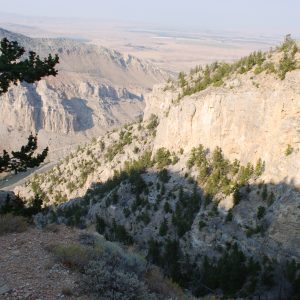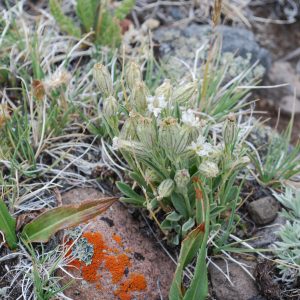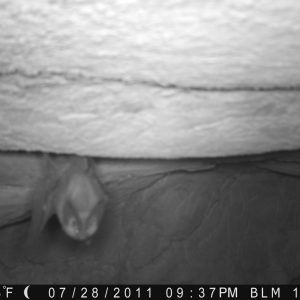It has been another whirlwind summer. It seems that whenever the busiest part of field season finally winds down sometime in July, there’s not much time left before fall. I can’t believe it’s September already! My summer started out with golden eagle nest monitoring and lots of seed collecting, and now it has come down to more seed collecting, sage grouse data analysis, and a variety of surveys: powerline and fence surveys in sage grouse core areas, rare plant surveys in the wild horse management area and elsewhere, and surveys of stock tanks to determine the presence or absence of bird escape ramps. No powerline survey has yet been done in the field office, save for just a couple of lines, so it’s always nice to be a part of a new project that is valuable to the BLM here.
I started acquiring this information for my mentor, the wildlife biologist, for analysis of human infrastructure impact on sage grouse, who don’t like lekking near powerlines. The information can also be used for the benefit of raptors. While I roam the “office,” I record whether the particular powerlines and poles I’m surveying fit the standards of the Avian Power Line Interaction Committee, which create and disseminate guidelines on how to protect raptors from electrocution. There are many things that power companies can do to modify poles that pose hazards to raptors. By knowing what kind of pole and what modifications (or lack therof) are present, the field office will now be able to pinpoint hotspots of unsafe powerlines and can correlate this with raptor observations to judge which areas will be most likely to have unfortunate interactions between raptors and powerlines. Although the modifications cost money to install, raptor deaths also cost money under enforcement of the Migratory Bird Treaty Act and the Bald and Golden Eagle Protection Act. Companies whose infrastructure causes eagle deaths can be charged up to $250,000 per eagle, so it behooves them to employ methods of protecting the raptors. I am glad that I am involved with this project, which will hopefully benefit raptors and at least help to make a more accurate assessment of the impact on sage grouse. It can be easy to lose sight of the purpose behind some projects, but it’s important to hold on to the underlying purpose – like wildlife protection- because this will motivate you to do a more thorough and diligent job, and makes it worth every day’s effort.
- View from the trail to Spirit Mountain Cave
- Kings Campion, rare plant on Carter Mountain
- Townsend’s long-eared bat, recorded by game camera as part of the field office’s first ever bat survey back in mid-summer



